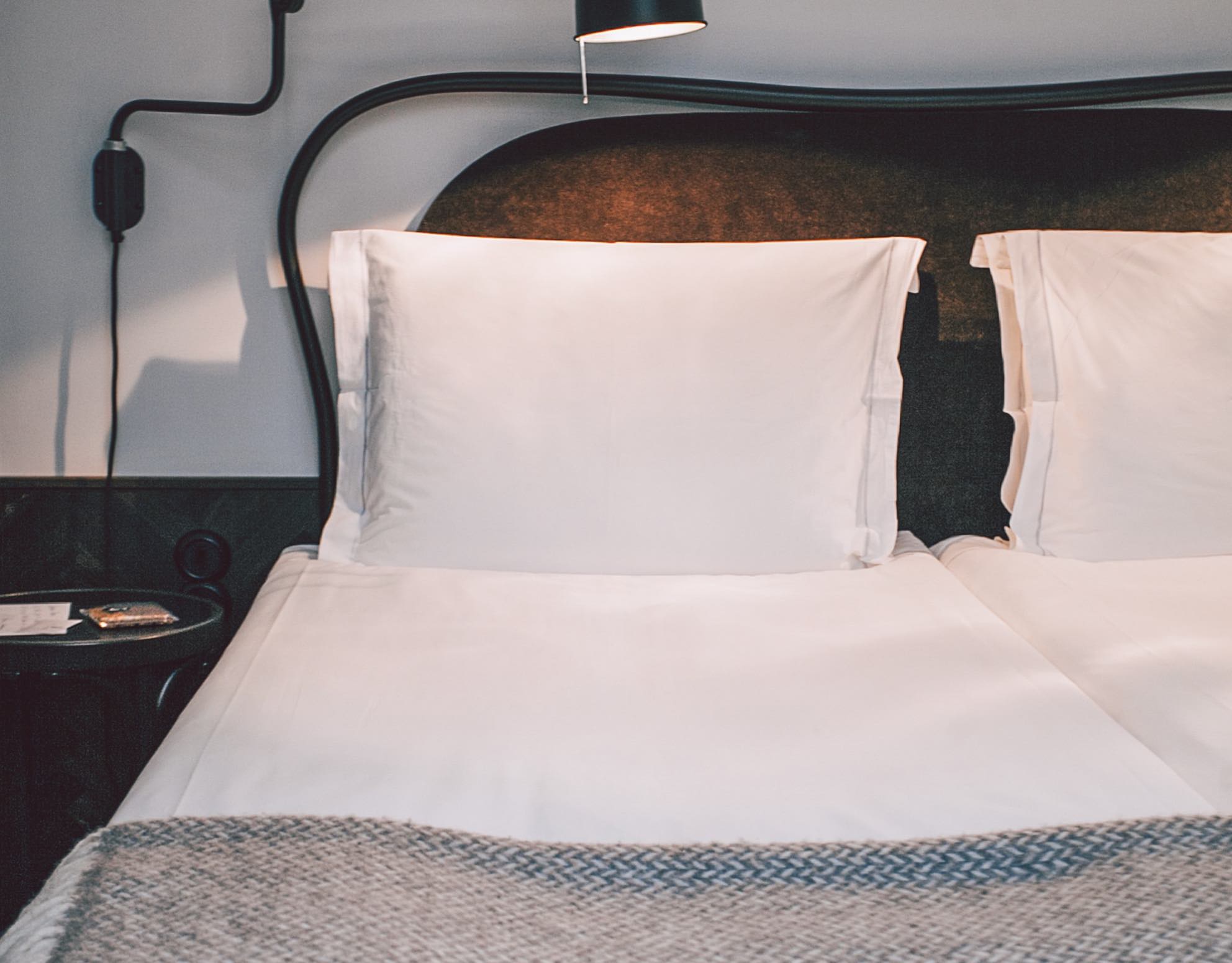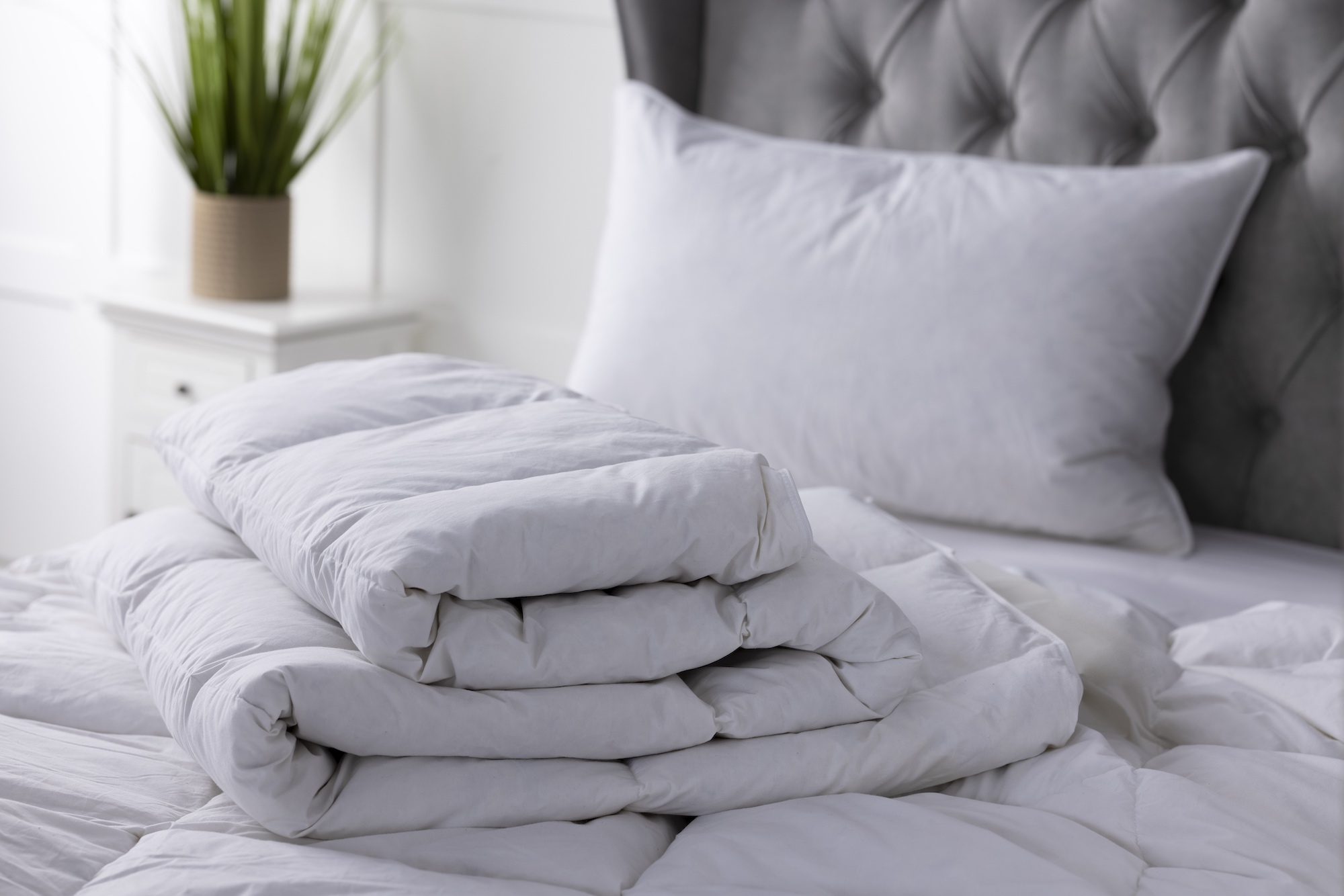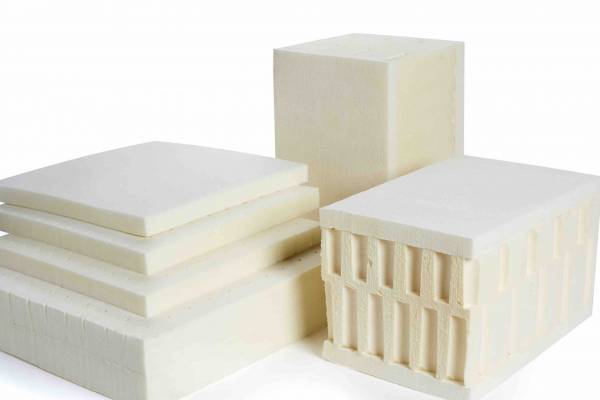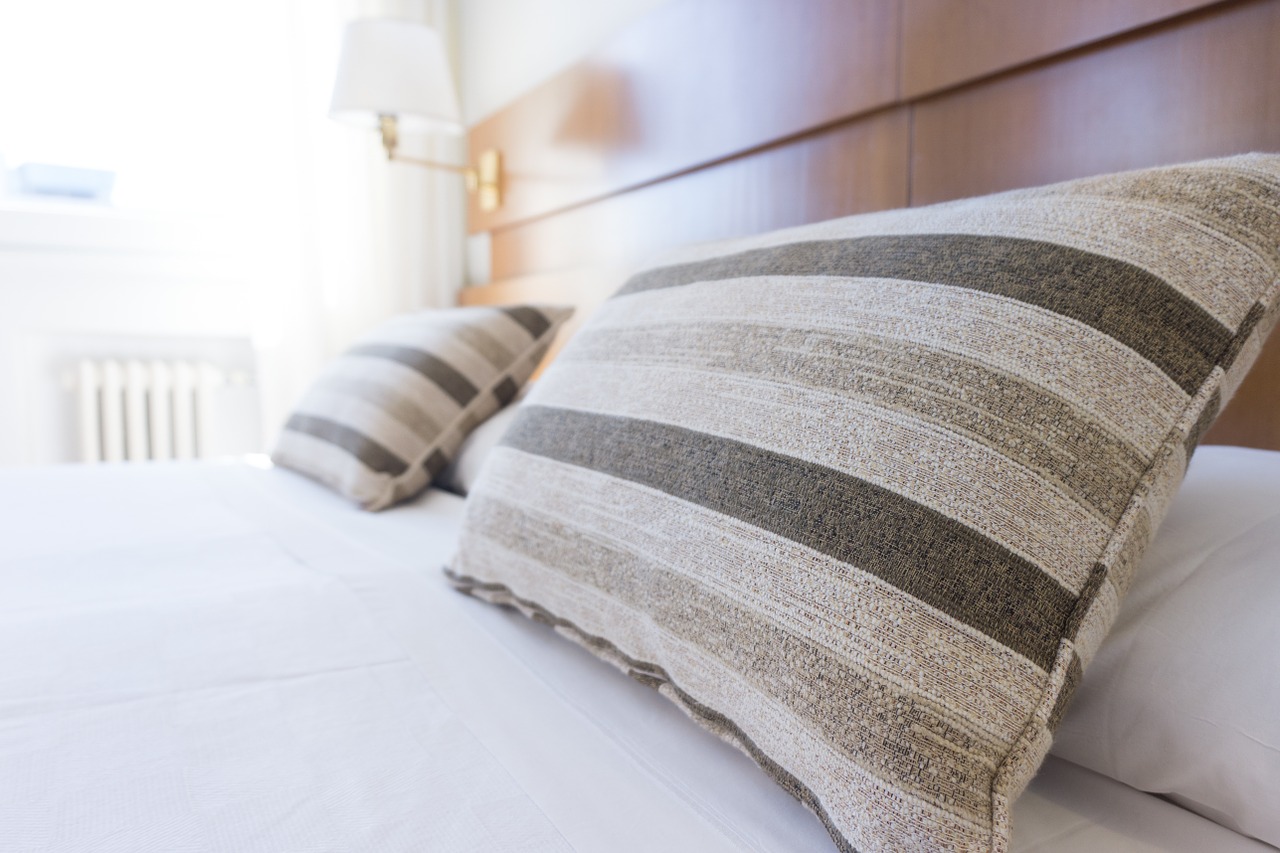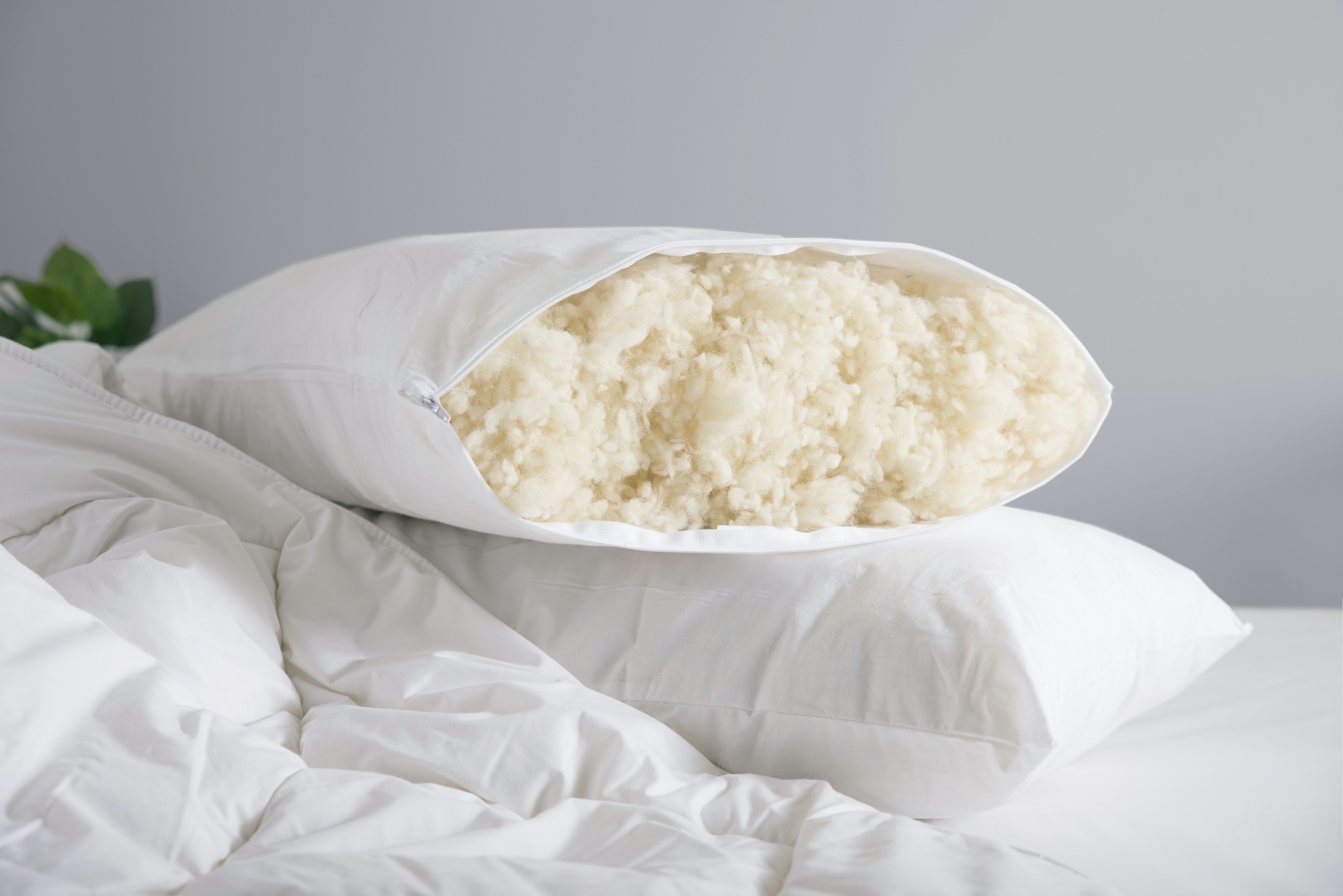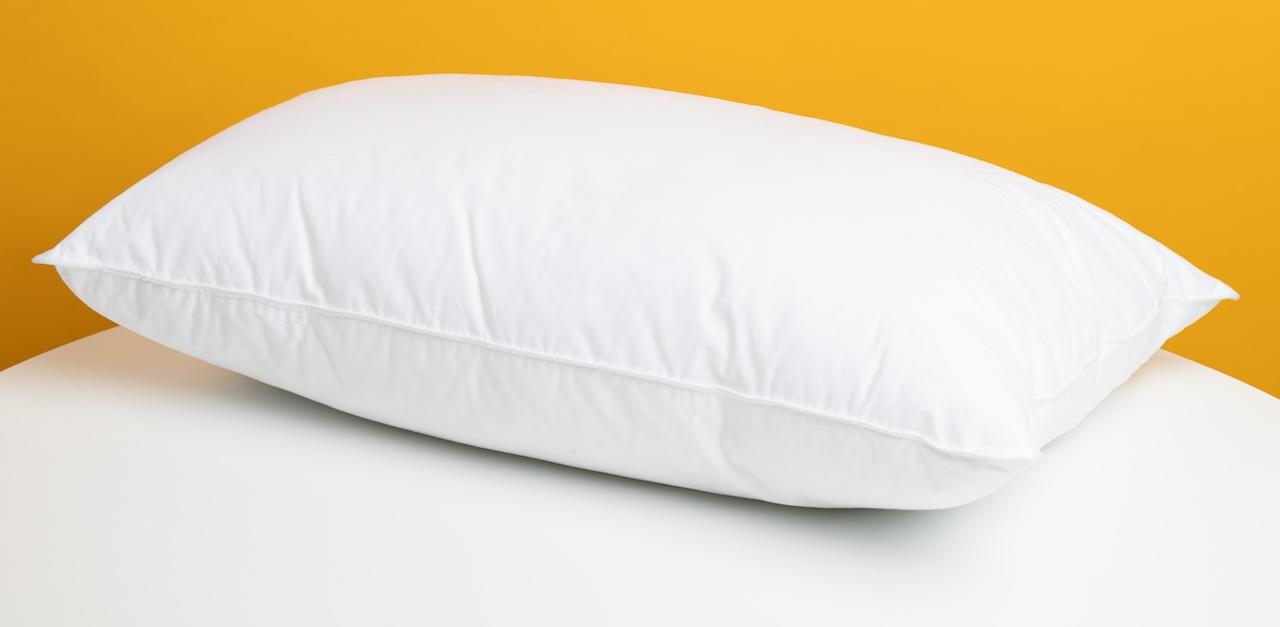Mattress Construction
December 2025All about pillows: which pillow is best & should I invest?
At John Ryan By Design, we’ve spent decades uncovering everything you could ever need to know about mattresses. All to help you make the very best decision when buying a new mattress. Choosing a suitable pillow is just as important a decision, albeit not as expensive as a brand-new mattress. It still shouldn’t be rushed or just guessed at!
How to pick the perfect pillow
- What is a pillow for?
- What other sleeping positions can you use a pillow for?
- What to look for before buying a new pillow
- Latex Pillows
- Memory Foam Pillows
- Feather Pillows
- Polyester Pillows
- How much to spend on a pillow?
- Pillow Maintenance: how to make your pillows last
- Can I machine wash a pillow?
What is a pillow for?
A pillow’s primary purpose is to provide your head with enough elevation to align with your spine so that you are comfortable when you sleep. The position of the pillow should align your head, spine and back to a place that you feel comfortable with.
We have all had experiences with unsuitable pillows and neck aches from hotels, guest bedrooms and buying the wrong pillow. All of which impact our sleep quality and can make us grumpy the next day. So choosing the best pillow for your sleeping position and preference is essential.

What else can you use a pillow for?
Pillows are not just for under your head. There are many other positions and uses of pillows to help you sleep better.
Whether that’s between your legs, under your back or as a ‘pillow baby’ (a pillow to hold and sleep with in a hug or cradle position).
Many sleepers find comfort and relief by strategically placing a pillow between various parts of their body during the night. This practice is often tailored to address specific sleep preferences (side, back or front sleeping), and health considerations (like sore hips), or alleviate discomfort.
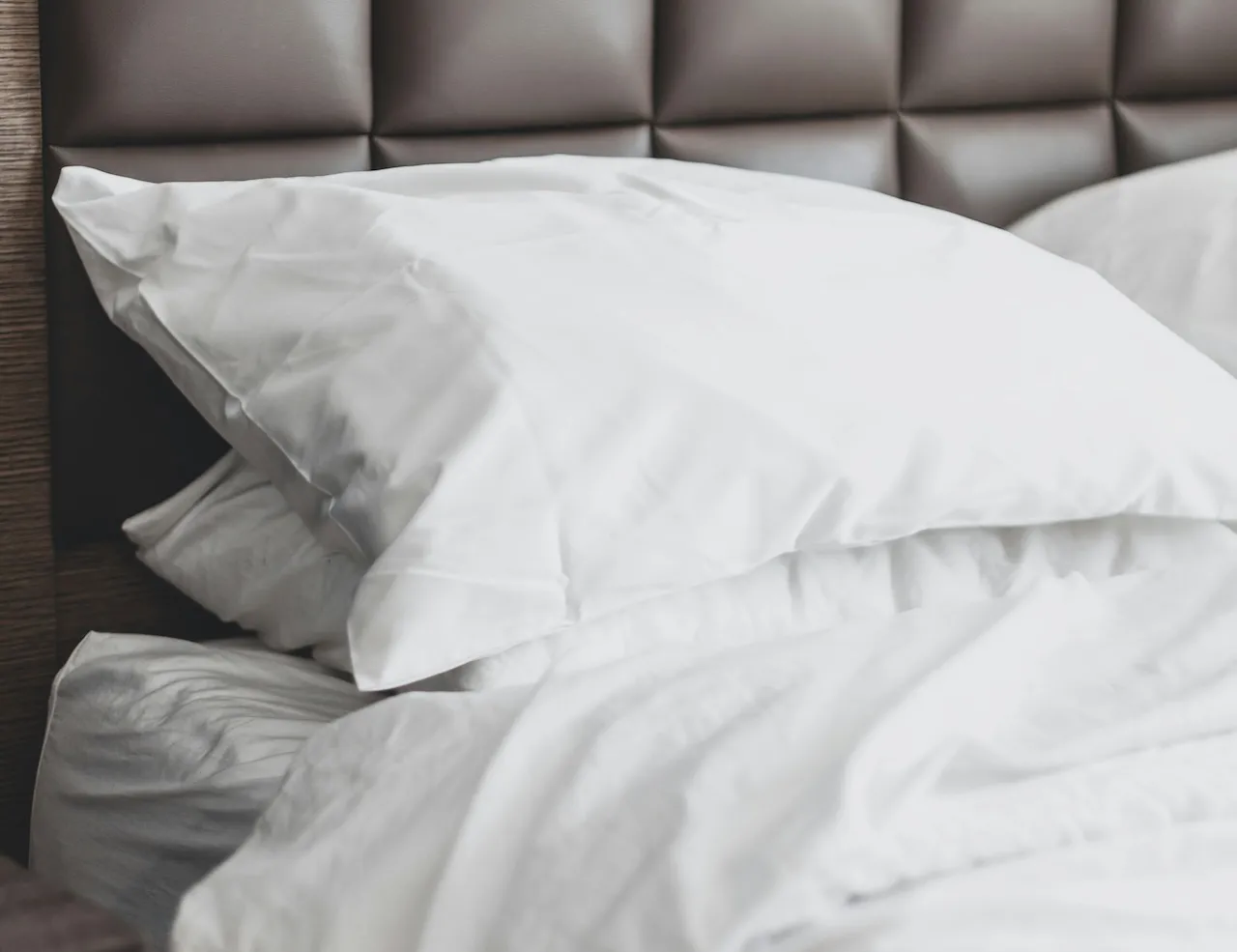
Here’s a breakdown of why some sleepers opt for placing a pillow between their legs, back, or stomach:
Pillow Between the Legs
-
- Spinal Alignment: Placing a pillow between the legs, especially for side sleepers, helps maintain proper spinal alignment. This can reduce strain on the lower back and hips by preventing the legs from pulling the spine out of alignment. It pulls the legs and spine into alignment.
- Comfort for Pregnant Women: Pregnant women often benefit from placing a pillow between their legs to alleviate pressure on the hips and lower back. This position can enhance comfort and improve sleep quality during pregnancy.
- Reducing Knee and Hip Pain: Individuals experiencing knee or hip pain may find relief by using a pillow to cushion and support these joints, promoting a more comfortable sleep experience. It stops joints from overextending when the knees are placed together at night.
2. Pillow behind the Back
-
- Additional Lumbar Support: Placing a pillow behind the back can provide extra lumbar support for those who suffer from lower back pain. This helps maintain the natural curve of the spine and minimizes discomfort. Acting as a helping hand to keep the spine properly aligned.
- Preventing Rolling onto the Back: Some sleepers who prefer sleeping on their sides use a pillow behind their back to prevent unintentional rolling onto their back during the night, which can be disruptive for those with certain medical conditions.
3. Pillow Under the Stomach
-
- Spinal Alignment for Stomach Sleepers: Stomach sleepers may benefit from placing a thin pillow under the stomach to help maintain a more neutral spine position. This can alleviate strain on the lower back and prevent excessive arching of the spine. This is especially true on super soft mattresses where front sleepers can overextend causing an overpronounced arch in the back.
- Relieving Pressure on Organs: Placing a pillow under the stomach can also relieve pressure on organs and reduce discomfort for individuals with certain gastrointestinal issues.
- Enhanced Comfort for Pregnancy: Pregnant women who prefer stomach sleeping can use a small pillow under the abdomen to support the belly and reduce strain on the back.
How to choose the perfect pillow
Choosing the perfect pillow follows the same rules as that of buying a new mattress. By understanding your pillow requirements you can then easily sortlist the best pillow types to help you sleep better at night. Unfortunately, most people just guess when buying pillows or choose whatever is on offer in the local home furnishings shop or online retailer. But if you’ve spent a lot of time and money on a new mattress you should also apply the same care to choosing a new pillow for you and potentially your partner.
Perfect Pillow Checklist Below
- Choose the right material (natural fibre vs synthetic)
- Pick a tension that suits you (soft, medium or firm)
- Decide if you need a breathable pillow (ie Natural fibre pillow)
- How much rebound you want (memory foam vs latex)
- Your pillow budget (Natural fibres/Latex are the most expensive, polyester and memory foam the cheapest)
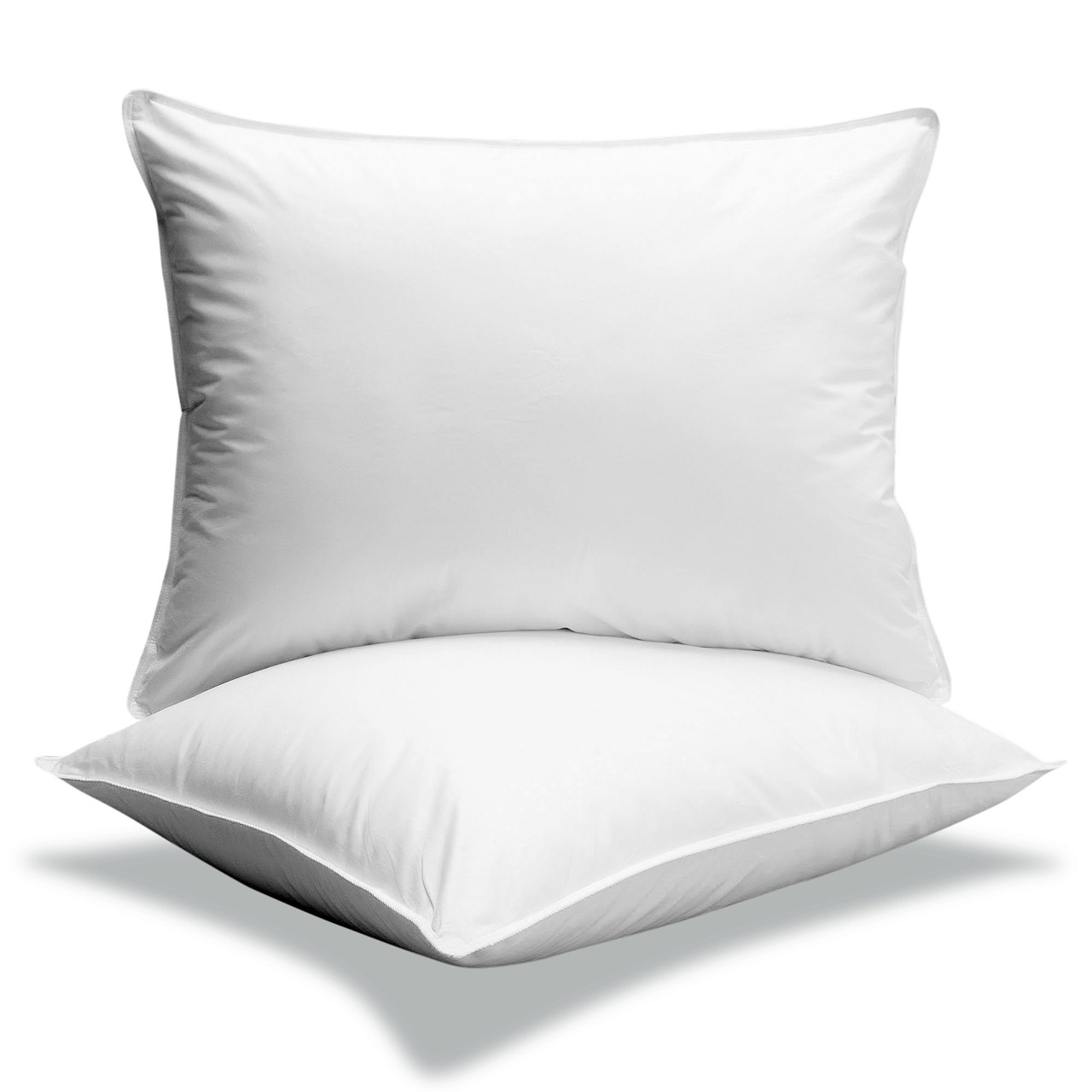
How much to spend on a pillow?
The big question we get asked all the time when buying pillows, is how much should you spend? Firstly it depends on the material you have chosen for your pillow and secondly, it depends on longevity. A £100 pillow that lasts 10 years is better than buying a £20 pillow every year for 10 years! If budget allows a minimum of £30 per pillow should be accounted for to ensure a durable and comfortable night’s sleep. But the more you can spend the higher the quality of the features of the pillow.
Our guide below gives some indication of what to spend
- £5-£40: Polyester entry-level pillows
- £20-£100: Memory foam pillows
- £50-£100: Traditional feather pillows
- £80-£150: Premium British wool pillows (with adjustable loft)
- £100-£200: Premium goose down and milled duck feather pillows
- £100-£400: High-end natural latex pillows
Budget an additional £20-£40 for quality cotton pillow protectors. When purchasing premium pillows, factor protectors into your initial investment rather than treating them as optional extras. The protection they provide effectively doubles your pillow’s usable lifespan, making them essential rather than discretionary.
Pillow Care & Maintenance: how to make a pillow last
The best advice we can give you with pillows is to use pillow protectors underneath your pillowcases. This is an essential piece of bedding to help reduce staining, sweat, bacteria and dust mites from taking up home in your pillows.
A pillow protector can be taken off and washed each week with your pillow case and enables you to keep allergens in the bedroom to a minimum. Usually, a pillow protector is far thicker than a pillowcase and captures stains or sweat as you sleep.
All bedding should be washed on a 60-degree cycle to get rid of dust mites, bacteria, sweat, urine or other bodily stains that your bed may encounter throughout its life.
Turning, shaking and fluffing your pillow each morning is also essential to even out settlement and air the pillow. Airing pillows allows any humidity to be released and keeps your pillows dry and fresh.
Our Superior 100% Cotton Pillow Protector creates a breathable barrier between your pillows and the nightly assault of body oils, perspiration, and allergens that accumulate in unprotected pillows. Crafted entirely from natural cotton rather than synthetic alternatives, the protector maintains breathability whilst providing essential defence. The zipper closure ensures secure encasement, making removal for regular washing straightforward and practical.
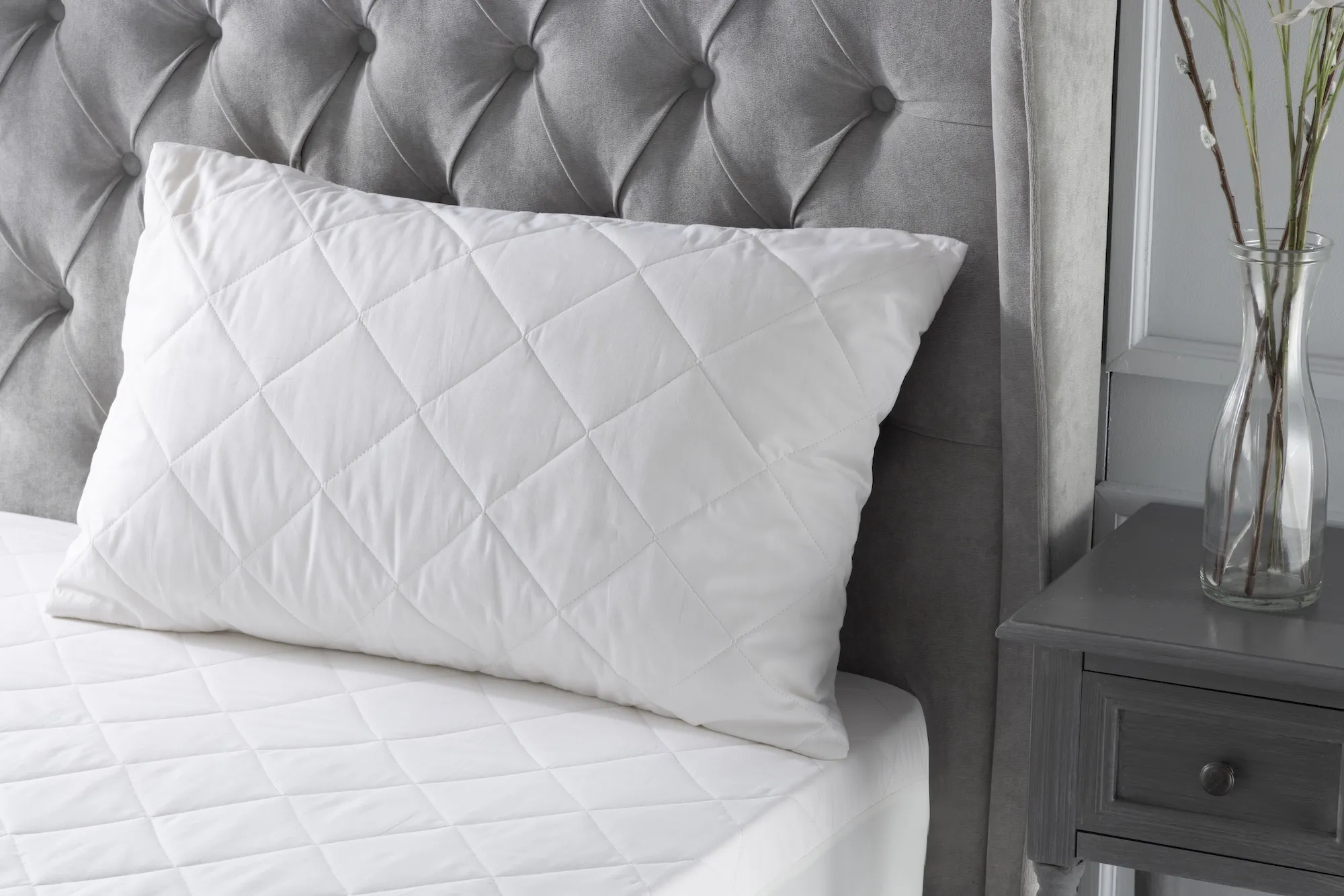
Unlike synthetic pillow protectors that rustle and trap heat, our cotton construction remains silent and breathable. You won’t experience the unpleasant crinkling sound common to waterproof or polyester protectors, nor will you wake with a sweaty head from trapped moisture. The cotton allows air circulation whilst blocking the larger particles that contaminate pillow filling.
Machine washable at 40°C, these protectors should be laundered weekly alongside your pillowcases, or at minimum every fortnight. This regular washing removes the accumulated oils and dead skin cells before they can migrate through to your pillow’s filling. For allergy sufferers, this frequent washing significantly reduces dust mite populations and allergen levels in your bedding.
The standard housewife size (50cm x 75cm) fits most UK standard pillows, including all the premium options we’ve discussed in this guide. Whether you’ve invested in goose down, British wool, latex, or premium feather pillows, protecting that investment with a proper cotton protector extends its life whilst maintaining the comfort and performance you purchased the pillow for in the first place.
Can I machine wash a pillow?
Yes, you can machine wash certain pillows, but it depends on the pillow. So it is worthwhile double-checking that the pillow in question, usually a polyester pillow, can be machine washed and what the maximum temperature is so they don’t shrink or warp.
There are also a few warnings to bear in mind with ‘machine washable pillows’ to avoid some of the disasters we here of.
- Always check your pillow can be washed
- Latex, Memory foam and Feather pillows should never be washed in a washing machine only sponged clean
- Ensure your pillow is fully stitched. Polyester pillows have a habit of breaking free in the washing machine and stuffing can clog your machine damaging it beyond repair
- Remove the pillow as soon as the cycle finishes and reshape it by hand
- Dry on a low-heat tumble drier setting for polyester pillows
- Never dry your pillows on top of a radiator or oven as they may melt

Summary
When it comes to buying and choosing your pillows its worthwhile running through the requirements and the features of each of the four main pillow types. If you’re on a tight budget a polyester pillow maybe the only option, but if you can a feather or latex pillow really is worth the investment. They last longer and offer a cooler sleep surface, meaning no waking up with the sweats or having to readjust your pillow throughout the night.
Do you have questions about mattress care, pillow and maintenance? If you now need to swap your old uncomfortable mattress for a more suitable new mattress then why not get in touch with our friendly team of experts on 0161 437 4419. You can also browse our online shop of handmade luxury mattresses.
Sleep well
John & Ryan

Dreaming of the perfect nights sleep?

Ask us a question
There are over 6000 questions and answers submitted by you on all questions about mattresses and bed problems. Enter a keyword such as Vi Spring, John Lewis beds, bad back or Memory Foam and see if your question has already been answered.
If you can’t find an answer in knowledge hub, ask a new question. We aim to respond to all questions within one working day.
Newsletter
Enter your email to join our newsletter. We’ll send you occasional news and mattress expertise.




